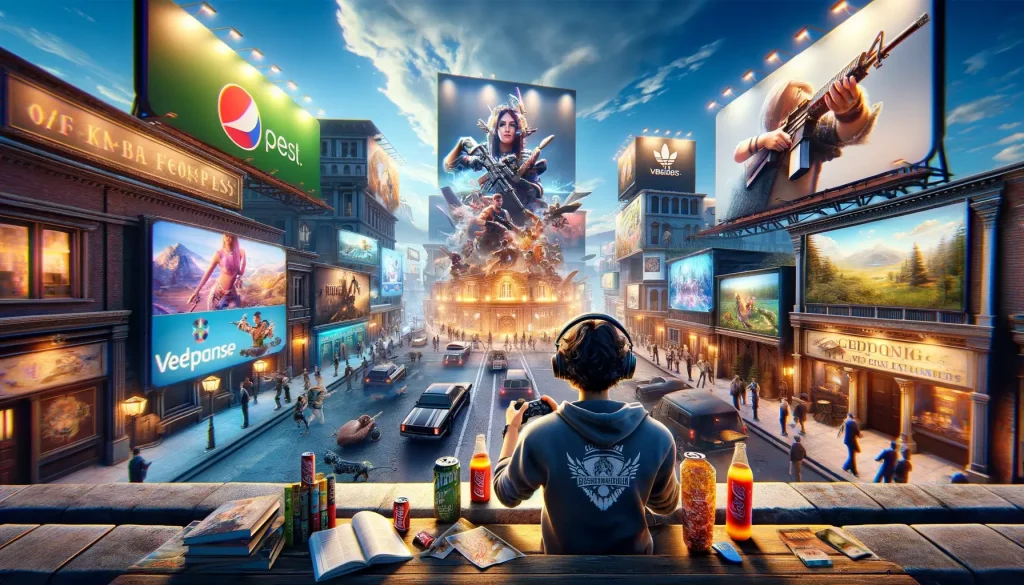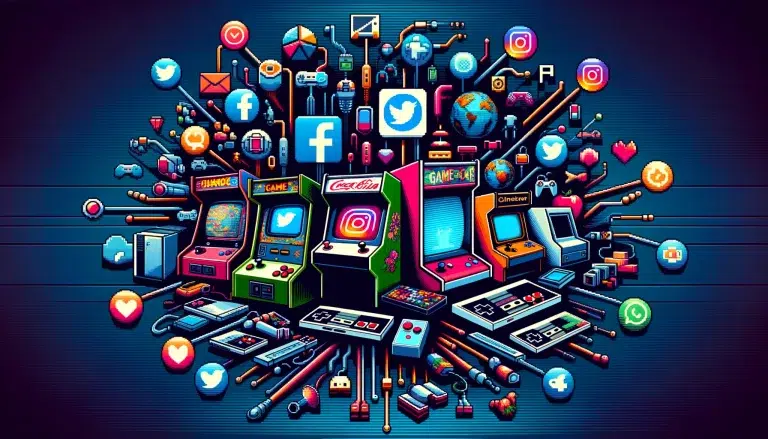Gaming and Education: How Video Games Impact Learning
Gaming has become an integral part of many students’ lives, with video games gaining popularity as a form of entertainment and recreation. However, what if I told you that gaming could also have educational benefits? That’s right! Video games have the potential to positively impact learning outcomes by engaging students, enhancing critical thinking skills, and facilitating immersive learning experiences.
When it comes to engagement and motivation, video games are unparalleled. The immersive and interactive nature of gaming captures the attention and interest of students, making learning more enjoyable and exciting. Unlike traditional educational methods, where students often feel passive recipients of information, video games encourage active participation and engagement. Players become active problem-solvers, navigating through challenges and making decisions that directly impact their progress in the game.
Speaking of problem-solving skills, video games are excellent tools for fostering critical thinking. Many games require players to analyze complex situations, strategize, and come up with innovative solutions to overcome obstacles. This constant need for problem-solving helps develop logical reasoning, analytical thinking, and decision-making skills. Students learn to think critically, assess different perspectives, and make informed choices – all essential skills for success in academia and beyond.
Video games also offer a unique opportunity for subject-specific learning. Educational games are designed to teach various subjects such as math, science, history, and language in a fun and interactive way. For example, math-based games can help students develop numerical skills, problem-solving abilities, and mathematical reasoning. History-based games can immerse students in historical events, allowing them to experience and learn from the past. By incorporating educational content into games, students can acquire knowledge and skills while enjoying themselves.
Collaboration and social skills are vital for success in today’s interconnected world, and video games can play a significant role in developing these skills. Multiplayer games, in particular, encourage collaboration, communication, and teamwork. Players must work together, strategize, and communicate effectively to achieve their goals. This collaborative gameplay fosters skills such as effective communication, cooperation, leadership, and empathy – all valuable attributes that go beyond the virtual world and into real-life interactions.
Gamified learning platforms have emerged as an innovative approach to education, combining educational content with game elements. These platforms make learning more interactive, engaging, and personalized. By incorporating game mechanics such as achievements, levels, and rewards, students are motivated to progress and achieve goals. Gamified learning platforms also provide immediate feedback, allowing students to track their progress, identify areas for improvement, and celebrate their successes. This gamification of education enhances motivation, engagement, and ultimately, learning outcomes.
While the educational potential of gaming is undeniable, it is crucial to address some considerations and challenges. Screen time is a concern, as excessive gaming can have negative effects on physical and mental health. It is essential to set boundaries and encourage a balanced lifestyle that includes other activities such as physical exercise, social interactions, and offline learning experiences. Additionally, ensuring age-appropriate content and monitoring the games students play is crucial to provide a safe and suitable learning environment.
In conclusion, gaming has the power to revolutionize education by engaging students, enhancing critical thinking skills, and facilitating immersive learning experiences. By leveraging the educational potential of video games, we can create a more exciting and effective way of learning. However, it is essential to address the challenges associated with gaming to ensure a well-rounded educational experience. So, let’s embrace the power of gaming and unlock its incredible potential to transform education for the better!
Engagement and Motivation: Unlocking the Power of Gaming in Education
Gaming has become an integral part of many students’ lives, with its popularity steadily increasing. But did you know that video games have the potential to go beyond mere entertainment and actually enhance learning? In this article, we will explore how gaming can engage and motivate students in the learning process, making education a fun and immersive experience.
One of the key strengths of video games is their ability to captivate learners by providing an interactive and immersive environment. When students are engrossed in a video game, they become active participants in their own learning journey. They are no longer passive recipients of information but active problem solvers and critical thinkers.
Video games require players to think strategically, analyze situations, and make decisions. This fosters critical thinking and problem-solving skills, which are essential for success in academic and real-world settings. Whether it’s figuring out a complex puzzle, navigating through a virtual world, or devising strategies to overcome challenges, video games provide an engaging platform for students to develop and apply these skills.
Furthermore, video games can facilitate subject-specific learning. There are numerous educational games available that are specifically designed to teach various subjects such as math, science, history, and language. These games present concepts in a fun and interactive way, making learning feel more like play. For example, a math game might require students to solve equations or puzzles to progress to the next level, reinforcing their mathematical skills while keeping them engaged.
Collaboration and social skills are also nurtured through multiplayer video games. Many games require players to work together as a team, communicating and coordinating their efforts to achieve a common goal. This collaborative element not only enhances social skills but also promotes effective teamwork and communication. Students learn the importance of cooperation, compromise, and effective communication, all of which are valuable skills that can be transferred to real-life situations.
As technology advances, gamified learning platforms have emerged, combining educational content with game elements to enhance learning outcomes. These platforms often incorporate elements such as rewards, badges, and leaderboards, creating a sense of achievement and motivation among students. By making learning a game-like experience, these platforms can significantly increase student engagement and motivation.
While the educational potential of gaming is significant, it is essential to address certain considerations and challenges. Screen time, for instance, should be monitored to ensure a healthy balance between gaming and other activities. Additionally, age-appropriate content and parental supervision are crucial to ensure the games chosen are suitable for the intended audience.
In conclusion, video games have the power to revolutionize education by engaging and motivating students in the learning process. From fostering critical thinking and problem-solving skills to facilitating subject-specific learning and promoting collaboration, gaming offers a unique and immersive educational experience. By leveraging the potential of gaming, we can create an exciting and effective learning environment that meets the needs of today’s students.
Critical Thinking and Problem-Solving Skills
When it comes to critical thinking and problem-solving skills, video games are an excellent tool for fostering these abilities in students. Unlike traditional learning methods, video games present players with unique challenges and puzzles that require them to think critically and come up with creative solutions.
In a game, players are often faced with complex situations that require them to analyze information, evaluate different options, and make decisions based on the given circumstances. This process not only helps them develop their critical thinking skills but also encourages them to think outside the box and explore alternative approaches.
One of the key aspects of video games that promote critical thinking is the feedback mechanism. Games provide immediate feedback on the player’s actions, allowing them to assess the outcomes of their decisions and adjust their strategies accordingly. This iterative process of trial and error encourages players to think critically about their choices and learn from their mistakes.
Moreover, video games often present players with challenging obstacles and puzzles that require problem-solving skills. These challenges can range from riddles and logical puzzles to complex quests and missions. By engaging in these problem-solving activities, players learn how to break down complex problems into smaller, manageable parts and devise strategies to overcome them.
For example, in puzzle-solving games like “Portal” or “The Witness,” players are presented with intricate puzzles that require them to think critically, analyze patterns, and experiment with different approaches to find the solution. These games not only engage players’ problem-solving skills but also enhance their ability to think creatively and apply logical reasoning.
Additionally, many educational games are specifically designed to target critical thinking and problem-solving skills in various subjects. For instance, math-based games like “Math Blaster” or “Prodigy” challenge students to solve math problems in engaging and interactive ways. Similarly, science games like “Kerbal Space Program” or “Universe Sandbox” allow students to explore scientific concepts and experiment with physics in a virtual environment.
By incorporating critical thinking and problem-solving elements into gaming, students can develop these essential skills while having fun and being actively engaged in the learning process. It is important to recognize the value of video games in promoting these cognitive abilities and to integrate them into educational settings to enhance learning outcomes.
So, the next time you find yourself immersed in a video game, remember that it’s not just about entertainment but also an opportunity to sharpen your critical thinking and problem-solving skills. Embrace the challenges, analyze the situations, and enjoy the process of unraveling complex puzzles. Gaming can be an educational adventure that enhances your cognitive abilities and prepares you for the real-world challenges ahead.
Subject-Specific Learning: How Video Games Facilitate Learning in Various Subjects
When it comes to education, video games have the incredible ability to make learning fun and engaging in a variety of subjects. Through interactive gameplay, these games can immerse students in educational content and provide an effective platform for subject-specific learning. Let’s explore some examples of how video games facilitate learning in various subjects:
1. Math:
– Educational games like “Math Blaster” and “Prodigy” help students practice math skills through fun challenges and problem-solving activities.
– These games often incorporate gamified elements such as rewards, levels, and achievements, making math learning an exciting adventure.
2. Science:
– Games like “Minecraft Education Edition” allow students to explore and experiment with scientific concepts in a virtual environment.
– They can build and observe ecosystems, conduct virtual experiments, and even learn about physics through the game’s mechanics.
3. History:
– Games such as “Assassin’s Creed: Origins” and “Civilization VI” offer historically accurate settings and storylines, allowing students to immerse themselves in different time periods.
– By playing these games, students can develop a deeper understanding of historical events, cultures, and the consequences of various decisions.
4. Language:
– Language learning games like “Duolingo” and “Rosetta Stone” provide an interactive and gamified approach to learning new languages.
– Through game-like exercises, students can practice vocabulary, grammar, and pronunciation in a fun and engaging way.
5. Geography:
– Games like “Geoguessr” and “Where in the World is Carmen Sandiego?” challenge students to test their knowledge of geography and map reading skills.
– By exploring virtual landscapes and solving location-based puzzles, students can enhance their understanding of different countries, landmarks, and physical features.
These are just a few examples of the wide range of educational games available that cater to specific subjects. By harnessing the power of video games, educators can create dynamic learning experiences that cater to different learning styles and capture students’ attention.
It’s important to note that video games should be used as a supplement to traditional teaching methods and not as a replacement. They provide an additional tool that can enhance learning outcomes and make education more enjoyable. It’s also crucial to choose age-appropriate games and ensure they align with the curriculum objectives.
So, if you’re looking for a way to make learning more exciting and interactive, consider incorporating educational video games into your teaching strategies. With the right selection of games, you can engage your students, foster subject-specific knowledge, and create a positive and immersive learning environment.
Collaboration and Social Skills: Learning Together in the Gaming World
In the world of gaming, it’s not just about playing solo. Multiplayer video games have the power to foster collaboration and develop essential social skills among students. Whether it’s teaming up to conquer a mission or working together to solve a complex puzzle, gaming provides a unique platform for students to learn and grow together.
Encouraging Collaboration and Communication Skills
Multiplayer video games often require players to communicate and collaborate effectively to achieve a common goal. Whether it’s coordinating strategies, assigning roles, or sharing information, players must work together to succeed. This collaboration promotes the development of essential communication skills, such as active listening, clear expression, and effective teamwork.
Studies have shown that multiplayer gaming can enhance collaboration skills beyond the virtual world. According to a study published in the Journal of Computer-Mediated Communication, students who engage in collaborative video game play demonstrate improved communication and problem-solving skills in real-life situations.
The Importance of Teamwork and Cooperative Gameplay
Many popular multiplayer games emphasize teamwork and cooperative gameplay. These games often require players to coordinate their actions, support each other, and make collective decisions. By working together, players learn the importance of teamwork, compromise, and shared responsibility.
For example, in games like “Overwatch” or “League of Legends,” players must choose and coordinate their characters’ abilities to achieve specific objectives. The success of the team depends on effective communication, strategic planning, and mutual support. Through these experiences, students develop valuable teamwork skills that can be applied in academic and professional settings.
The Benefits of Collaboration in the Gaming World
Collaboration in the gaming world offers several benefits for students’ learning and personal development:
- Enhanced Problem-Solving Skills: Collaborative gameplay often involves tackling complex challenges that require critical thinking and problem-solving. By working together, students learn to analyze situations, evaluate different perspectives, and devise creative solutions.
- Improved Communication Skills: Multiplayer games foster communication skills through in-game interactions, voice chats, and text-based communication. Students learn how to express their thoughts clearly, listen actively, and convey information effectively.
- Increased Empathy and Tolerance: Collaborative gaming can promote empathy and tolerance among students. Through working with diverse teammates, students learn to understand and respect different perspectives, cultures, and backgrounds.
- Building Social Connections: Multiplayer gaming provides a platform for students to connect and build relationships with peers who share similar interests. These social connections can have a positive impact on students’ well-being and overall social development.
Expert Advice: Balancing Gaming and Real-Life Collaboration
While collaborative gaming can be beneficial, it’s important to strike a balance between virtual interactions and real-life collaborations. Here are a few tips to consider:
- Set Limits: Encourage students to establish healthy boundaries for gaming and allocate time for other activities, including face-to-face collaborations.
- Encourage Offline Collaborations: Encourage students to engage in collaborative activities outside of gaming. Encourage group projects, team sports, or community service to foster collaboration in real-world settings.
- Emphasize Communication Skills: Remind students that effective communication goes beyond gaming. Encourage them to practice active listening, clear expression, and collaboration in various contexts.
- By embracing the opportunities for collaboration presented by multiplayer gaming, educators can harness the power of gaming to develop essential social skills, promote teamwork, and enhance students’ overall learning experience.
Gamified Learning Platforms: Enhancing Learning with Fun and Engagement
Do you remember how exciting it was to earn badges, level up, and unlock achievements while playing video games? Well, imagine if learning could be just as fun and rewarding. That’s where gamified learning platforms come in.
Gamified learning platforms combine educational content with game elements to create an engaging and interactive learning experience. By leveraging the natural motivation and enjoyment that comes with gaming, these platforms have the potential to enhance learning outcomes for students of all ages.
So, how exactly do gamified learning platforms work? Let’s dive in and find out!
- Turning Learning into a Game:
Gamified learning platforms take traditional educational content and transform it into a game-like format. This can involve incorporating elements such as points, levels, badges, leaderboards, and virtual rewards. By giving students a sense of achievement and progression, these platforms tap into their intrinsic motivation, making learning more enjoyable and engaging. - Personalized Learning Paths:
One of the key benefits of gamified learning platforms is their ability to offer personalized learning paths. These platforms adapt to each student’s individual needs and pace, providing tailored content and challenges. This personalized approach ensures that students are appropriately challenged and can progress at their own speed, maximizing their learning potential. - Interactive and Immersive Learning:
Gamified learning platforms go beyond traditional textbooks by offering interactive and immersive learning experiences. Through the use of multimedia elements, simulations, and virtual environments, students can actively engage with the content, making it more memorable and meaningful. This hands-on approach fosters deeper understanding and retention of the material. - Collaboration and Competition:
Gamified learning platforms often include features that promote collaboration and healthy competition. Students can work together on tasks, solve problems as a team, and even compete against each other in friendly challenges. This collaborative and competitive spirit encourages social interaction, communication, and the development of important teamwork skills. - Real-Time Feedback and Progress Tracking:
Another advantage of gamified learning platforms is the ability to provide real-time feedback and track students’ progress. Students receive immediate feedback on their performance, allowing them to identify areas for improvement and adjust their learning strategies. Additionally, teachers can monitor students’ progress and provide targeted assistance when needed, ensuring a personalized and supportive learning experience. - Reinforcement of Positive Behaviors:
Gamified learning platforms excel at reinforcing positive behaviors and encouraging continuous effort. By rewarding students for completing tasks, achieving milestones, and demonstrating mastery, these platforms motivate students to stay focused and dedicated to their learning. This positive reinforcement creates a cycle of success and encourages students to persist even when faced with challenges.
As with any educational tool, there are considerations and challenges to be aware of when using gamified learning platforms. It’s important to strike a balance between gaming and other activities, ensuring that students have a well-rounded educational experience. Additionally, age-appropriate content, screen time limits, and data privacy should always be taken into account.
In conclusion, gamified learning platforms have the potential to revolutionize education by making learning engaging, fun, and effective. With personalized learning paths, interactive experiences, collaboration opportunities, and real-time feedback, these platforms can enhance learning outcomes and foster a love for lifelong learning. So, let’s embrace the power of gamification and unlock the full potential of education!
(Note: The information provided in this article is based on expert advice and research in the field of gamified learning platforms.)
Considerations and Challenges
When it comes to incorporating video games into education, there are some important considerations and challenges that need to be addressed. While gaming has the potential to enhance learning outcomes, it is crucial to ensure a well-rounded educational experience for students. Let’s explore these considerations and challenges in more detail:
1. Screen Time
One concern that often arises when discussing video games in education is the amount of screen time students are exposed to. It is essential to find a balance between gaming and other activities. Encouraging students to engage in physical activities, outdoor play, and other non-screen related hobbies is equally important for their overall well-being. It is recommended to limit screen time and ensure that gaming is balanced with other educational and recreational activities.
2. Age-Appropriate Content
Another consideration is the importance of age-appropriate content in video games. As educators, it is crucial to select games that align with the developmental level and maturity of students. Games should provide educational value without exposing students to inappropriate or violent content. Ensuring that the content is suitable for the intended age group is a responsibility that should not be overlooked.
3. Balancing Gaming and Academics
While video games can be engaging and educational, it is essential to strike a balance between gaming and academic responsibilities. Students should understand that gaming is a complement to their learning journey and not a replacement for traditional academic endeavors. Setting limits and encouraging time management skills can help students maintain a healthy balance between gaming and their academic responsibilities.
4. Monitoring Progress and Assessing Learning
One challenge with incorporating video games into education is the need to monitor student progress and assess learning outcomes. Traditional assessments may not effectively capture the skills and knowledge gained through gaming experiences. Educators need to find innovative ways to measure and evaluate student learning in the context of gaming, such as through project-based assessments or game-specific quizzes. This ensures that the educational impact of video games can be accurately measured and acknowledged.
5. Access and Equity
Access to video games and gaming devices can be a challenge, particularly in low-income communities or schools with limited resources. It is important to ensure that all students have equal opportunities to engage with educational video games. Schools and educational institutions can explore options such as providing access to gaming devices and platforms in classrooms or offering after-school gaming programs. Additionally, promoting the development of affordable educational games and gamified learning platforms can help bridge the gap and ensure equity in gaming-based education.
As we explore the educational potential of video games, it is crucial to address these considerations and challenges effectively. By doing so, we can maximize the benefits of gaming while mitigating any potential drawbacks. With careful thought and planning, video games can become a valuable tool for enhancing learning outcomes and creating engaging educational experiences for students of all ages. So let’s embrace the power of gaming and harness its potential to revolutionize education!
As an affiliate of Amazon and other retailers, we may earn a small commission when you buy via our links, at no additional cost to you. Thank you!











